3 Jan 2019 | Artistic Freedom, Index Arts, Magazine, News and features, Student Reading Lists, Volume 47.04 Winter 2018 Extras
[vc_row][vc_column][vc_column_text]
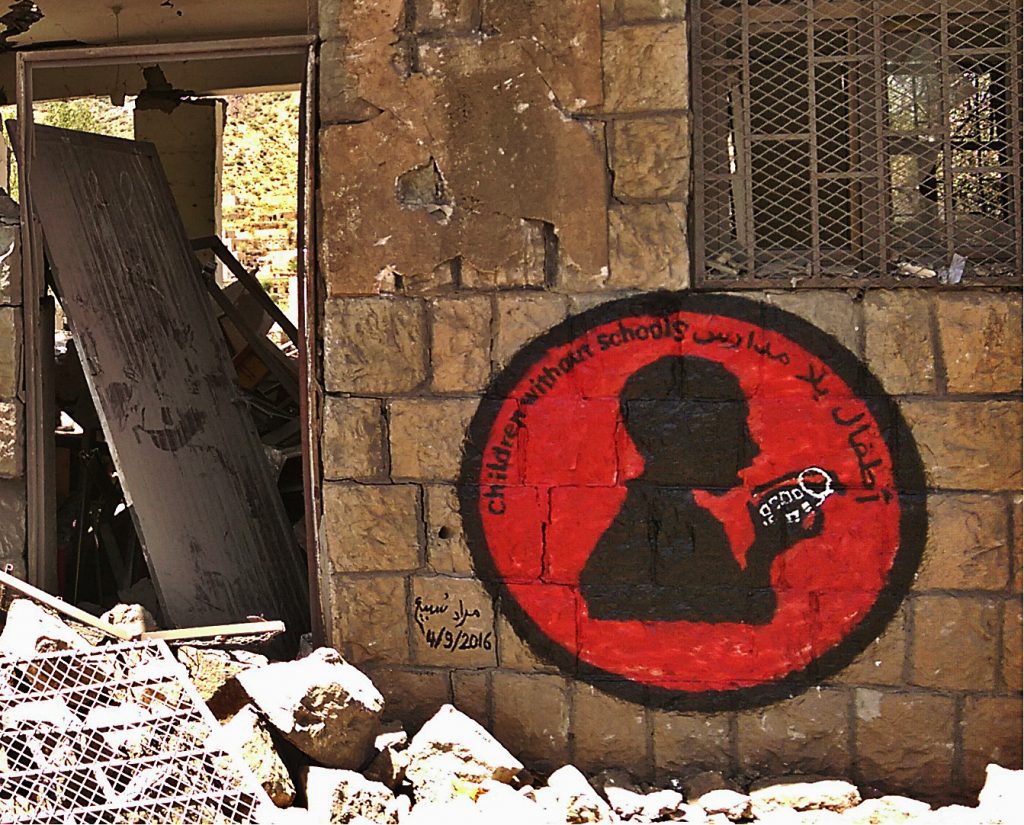
An anti-war mural created by Yemeni street artist Murad Subay, 2016 Freedom of Expression Arts Award winner.
Art has been used as a form of protest during times of crisis throughout history. It is a popular and, at times, effective platform to express opinions about societal or governmental problems, particularly when other forms of protest are not available. Protest art includes performances, site-specific installations, graffiti and street art.
Here Index highlights key articles about art and protest from around the world, from the past five decades.
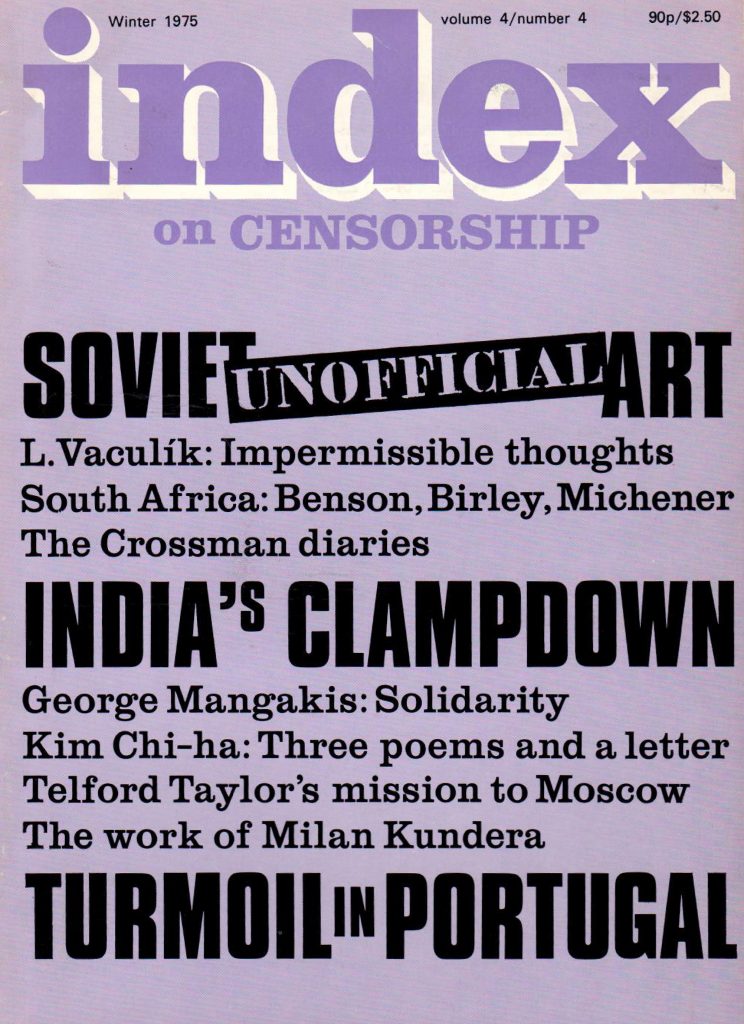
Soviet “unofficial” art
December 1975, vol. 4 issue: 4
Alexander Glezer writes about his participation in organising the unofficial art exhibit in Moscow. When the first exhibition opened, it was bulldozed by undercover police officers and agents from the KGB (Committee for State Security). In the second exhibition, the authorities were forced by the public to grant permission and ten to fifteen thousand people came to see the paintings and sculptures of 50 nonconformist artists’. Glezer, 41-years-old, was questioned by the KGB, arrested and sentenced 10 days for “hooliganism”. He was allowed to leave the Soviet Union in 1975 February.
Read the full article
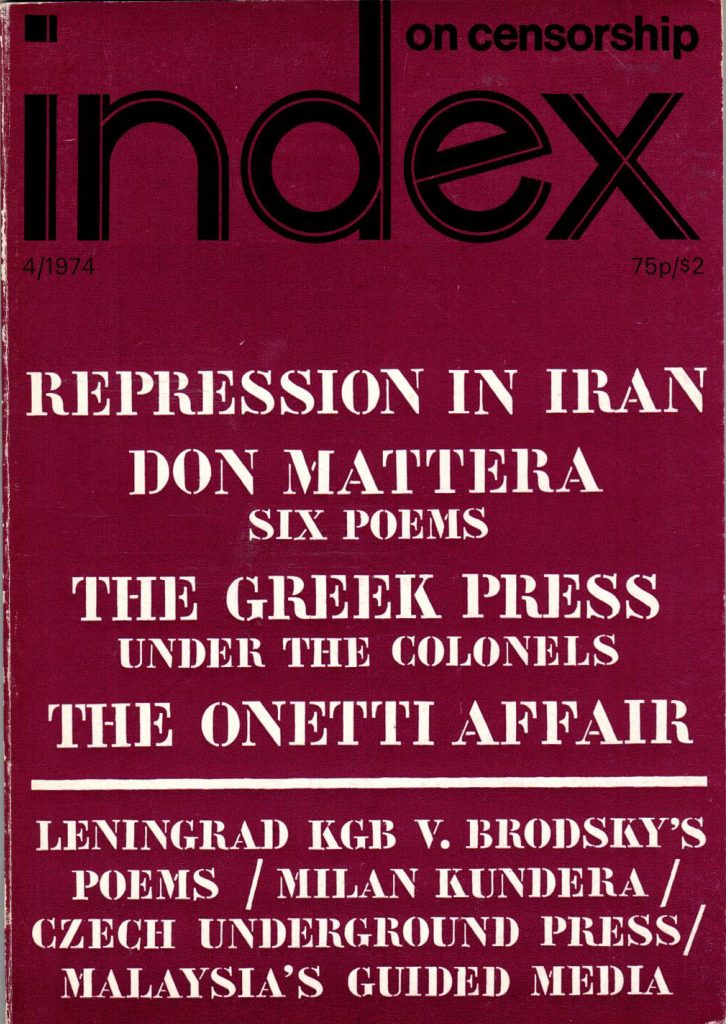
Portugal: Art triumphant
December 1974, vol. 3 issue: 4
The Sao Mamed Gallery opened with 186 artworks by 87 artists who had never shown their work in public before due to the regime’s dictating of Portuguese life. The gallery was built to celebrate the result of the military coup abolishing censorship of expression.
Published in the New York Times.
Read the full article
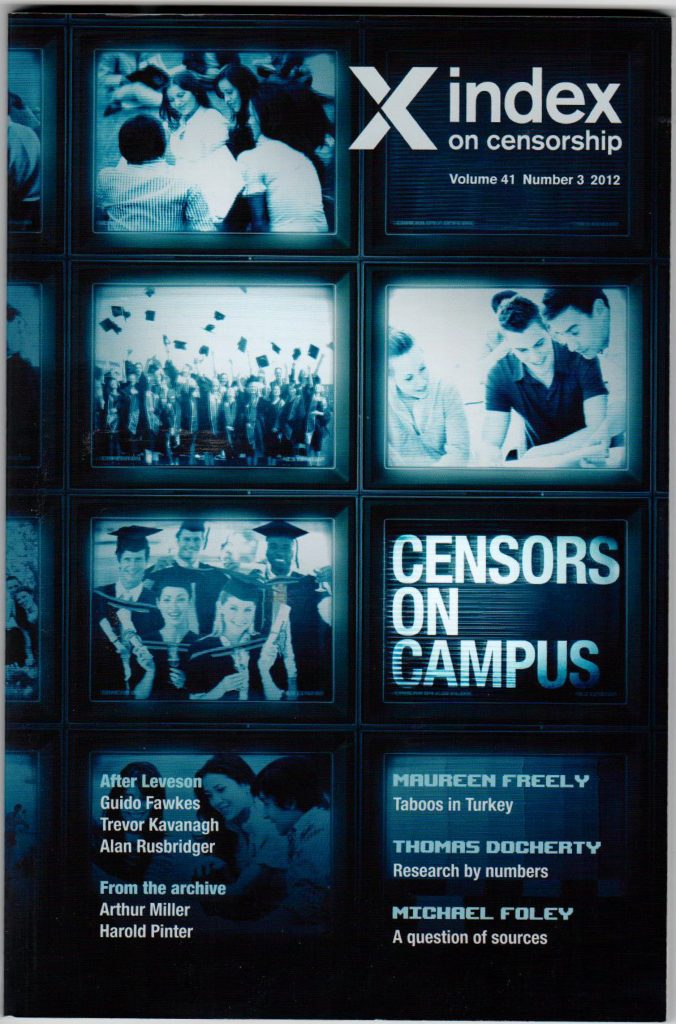
Art of Resistance
September 2012, vol. 41 issue: 3
Malu Halasa, co-curator of the exhibition Culture in Defiance: Continuing Traditions of Satire, Art and the Struggle for Freedom in Syria, writes about how the violence in Syria affected country’s art of resistance production and then created ideas of spreading this work further West which was the reason for the exhibition’s creation.
Read the full article
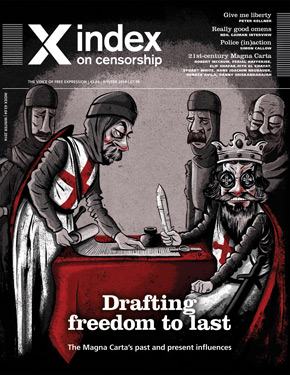
Dark Arts: Three Uzbek artists speak out on state constraints
December 2014, vol. 43 issue: 4
Author Nargis Tashpulatova interviews writer three Uzbek artists – Sid Yanishev, photographer Umida Akhmedova and conceptual artist Vyacheslav Akhunov who continue to create artwork throughout governmental threats and censorship and the regression of art in Uzbek society.
Read the full article
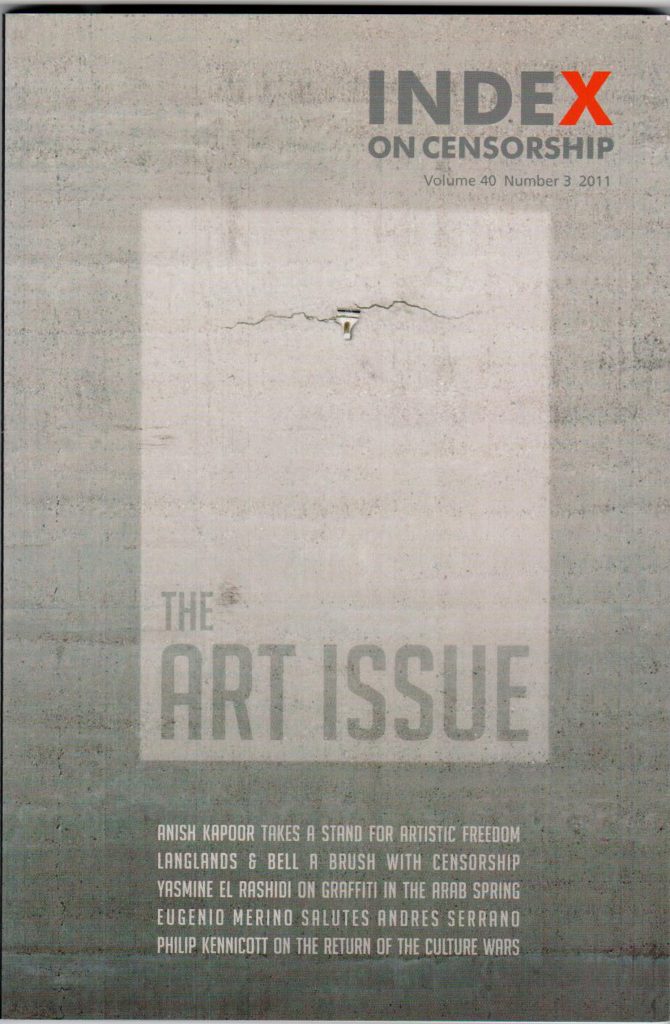
Art or Vandalism
October 2011, vol. 40 issue: 3
Yasmine El Rashidi writes on the outbreak of graffiti in the streets in Cairo during the 18 days of the Egyptian revolution.
Read the full article
[/vc_column_text][/vc_column][/vc_row][vc_row][vc_column][vc_basic_grid post_type=”post” max_items=”4″ element_width=”6″ grid_id=”vc_gid:1546513460633-7f241be5-ccf1-1″ taxonomies=”8890″][/vc_column][/vc_row]
3 Apr 2017 | News and features, Volume 46.01 Spring 2017 extras
[vc_row][vc_column][vc_column_text]
[/vc_column_text][/vc_column][/vc_row][vc_row][vc_column][vc_column_text]
In the spring issue of Index on Censorship magazine, we look at how free speech around the world is under massive pressure from conflicting interests.
On this podcast, Guadalajara-based Duncan Tucker describes the tightrope walked by Mexico’s journalists as they try to report on the government and organised crime; also Annemarie Luck, the editor of Tokyo Weekender magazine, discusses Japan’s “really weird” culture of penis festivals, censored artists and manga girls. Additionally, as the magazine’s global journalists break down how you can spot made-up news, exiled Eritrean journalist Abraham T. Zere muses on why these viral stories fool people so easily.
Print copies of the magazine are available on Amazon, or you can take out a digital subscription via Exact Editions. Copies are also available at the BFI, the Serpentine Gallery, MagCulture, (London), News from Nowhere (Liverpool), Home (Manchester) and on Amazon. Each magazine sale helps Index on Censorship continue its fight for free expression worldwide.
[/vc_column_text][/vc_column][/vc_row][vc_row][vc_column][vc_column_text]
Kieran Etoria-King is editorial assistant at Index on Censorship magazine, and the 2016 recipient of the Tim Hetherington Fellowship. He tweets @etoriaking
[/vc_column_text][/vc_column][/vc_row][vc_row content_placement=”top”][vc_column width=”1/3″][vc_custom_heading text=”The Big Squeeze” font_container=”tag:p|font_size:24|text_align:left” link=”url:https%3A%2F%2Fwww.indexoncensorship.org%2Fmagazine|||”][vc_column_text]The spring 2017 issue of Index on Censorship magazine looks at multi-directional squeezes on freedom of speech around the world.
Also in the issue: newly translated fiction from Karim Miské, columns from Spitting Image creator Roger Law and former UK attorney general Dominic Grieve, and a special focus on Poland.[/vc_column_text][/vc_column][vc_column width=”1/3″][vc_single_image image=”88788″ img_size=”medium” alignment=”center” onclick=”custom_link” link=”https://www.indexoncensorship.org/magazine”][/vc_column][vc_column width=”1/3″ css=”.vc_custom_1481888488328{padding-bottom: 50px !important;}”][vc_custom_heading text=”Subscribe” font_container=”tag:p|font_size:24|text_align:left” link=”url:https%3A%2F%2Fwww.indexoncensorship.org%2Fsubscribe%2F|||”][vc_column_text]In print, online. In your mailbox, on your iPad.
Subscription options from £18 or just £1.49 in the App Store for a digital issue.
Every subscriber helps support Index on Censorship’s projects around the world.
 SUBSCRIBE NOW[/vc_column_text][/vc_column][/vc_row]
SUBSCRIBE NOW[/vc_column_text][/vc_column][/vc_row]
18 Mar 2016 | Greece, mobile, News and features
Stills by Belgian artist Kris Verdonck, from A Two Dogs Company on Vimeo.
“My job is to make good art,” said Belgian artist Kris Verdonck. “I have no interest in being deliberately offensive or provocative.”
Verdonck was speaking at an event at the Onassis Cultural Centre in Athens last week, entitled Art Freedom Censorship. Featuring a range of international speakers and organisations, including Index on Censorship, the event was inspired by recent works and performances that have been shutdown in Greece following public outcry.
In Verdonck’s case, that outcry came predominantly from one man: a local priest.
Last year Onassis Cultural Centre put on one of Verdonck’s works, Stills, a series of oversized, slow-mo nudes that move within confined spaces. The artist has been showing the images around Europe, projected on to buildings associated with historical dictators. In Athens, the show lasted just one day before a priest complained. A staff member from Onassis was temporarily held in police custody before the centre agreed to halt the projections.
Also speaking at Art Freedom Censorship was director Pigi Dimitrakopoulou, who presented a play, Nash’s Balance, at Greece’s National Theatre in January, before it was pulled mid-run after vehement protests and threats of violence. The work used text taken from a book by Savvas Xiros, a convicted member of the 17 November group, which the Greek government considers a terrorist organisation.
In one of the more heated debates of the evening, Dimitrakopoulou said she hadn’t given much thought to censorship before being embroiled in the scandal. “I always thought I was too conservative to be affected by such things.” She spoke of a “political tsunami” that engulfed the show. “I expected a reaction, but more related to the work,” she said, adding that she believed most critics hadn’t seen it.
Greek journalist and publisher Elias Kanellis, who had been outspokenly against the decision to use the 17 November text, stood by his criticism but clarified that he never called for it to be censored. “Criticism is the founding principle of democracy,” he said. “But what if I were to publish Jihadi propaganda?”
Discussions also included a look at the role of the church in Greece today. Stavros Zoumboulakis, president of the supervisory council of the Greek National Library, spoke of orthodox priests refusing to admit the nation is now a post-Christian society, with only a tiny percentage attending mass. But Xenia Kounalaki, a journalist from Greek daily newspaper Kathimerini, argued the issue was less about numbers of active worshipers, more a problem of top-down influence, which still extends into the nation’s education system.
Other speakers included former Charlie Hebdo columnist and author of In Praise of Blasphemy Caroline Fourest; Mauritanian filmmaker Lemine Ould M. Salem, who has run into difficulties with France’s film classification board over his documentary about Salafi fighters in Mali; and German director Daniel Wetzel, who is presenting a theatrical interpretation of Mein Kampf at Onassis in April.
Vicky Baker spoke at Art Freedom Censorship on behalf of Index on Censorship
4 Jan 2016 | Europe and Central Asia, mobile, Netherlands, News and features
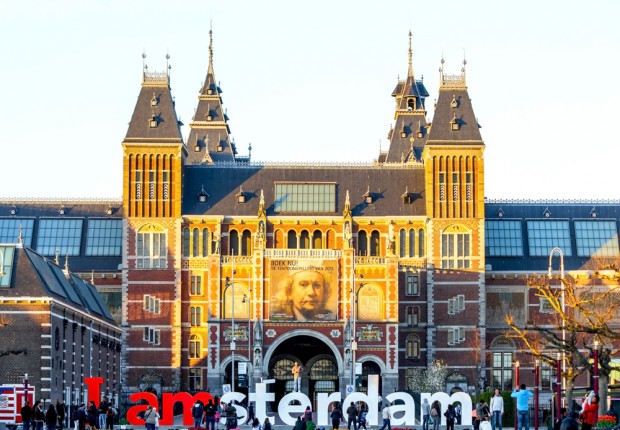
Rijksmuseum, Amsterdam. Credit: Shutterstock / Littleaom
Amsterdam’s Rijksmuseum is in the process of removing terms visitors may find offensive, including “negro”, “dwarf” and “Indian”, from digitised titles and descriptions of around 220,000 pieces of artwork, replacing them with less racially-charged terminology.
The titles of 8,000 pieces of art on display were updated in time for the museum’s reopening in 2013 after a decade-long renovation, and the museum has now begun work to remove “offensive” language from the museum’s digitised collections.
This includes a 1900 painting by Dutch artist Simon Maris originally called “Young Negro-Girl” which will now be called “Young Girl Holding a Fan”.
The head of the Rijksmuseum Martine Gosselink, who initiated the project said: “The point is not to use names given by whites to others.”
“We Dutch are called kaas kops, or cheeseheads, sometimes, and we wouldn’t like it if we went to a museum in another country and saw descriptions of images of us as ‘kaas kop woman with kaas kop child’,” she added: “And that’s exactly the same as what’s happening here.”
Other words to be removed from the collections include Mohammedan, an old word for Muslim; and Hottentot, a name given to Dutch people by the Khoi people of South Africa, meaning stutterer.
In the latest issue of Index on Censorship magazine, which tackles taboos and the breaking down of social barriers, Kunle Olulode discusses the problems with editing out racist language from books and films. “Should we not accept that films and TV programmes set in the past will include some stereotypical images of minorities?”, he writes. However uncomfortable these words may seem, they should not be censored as they provide vital insights into history.







